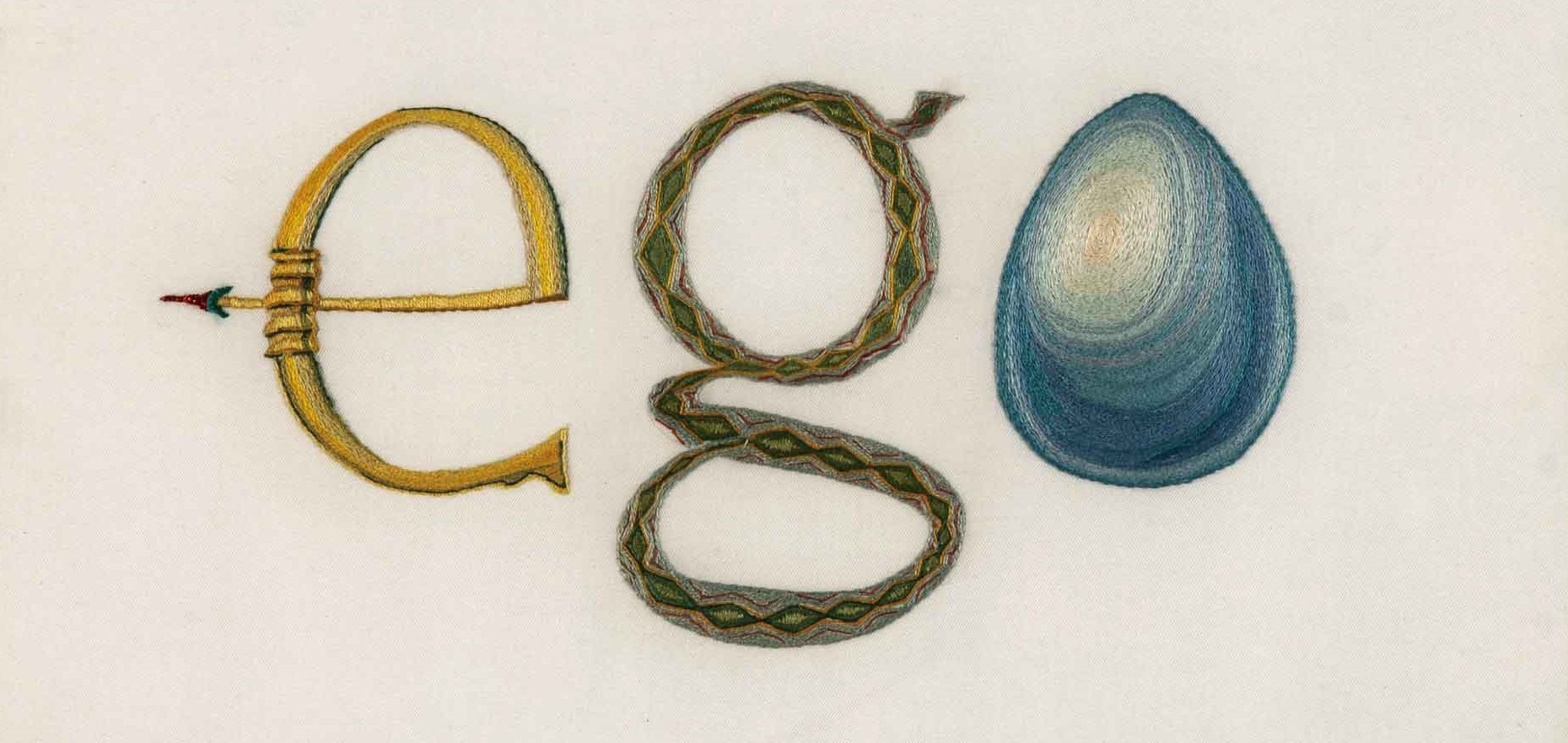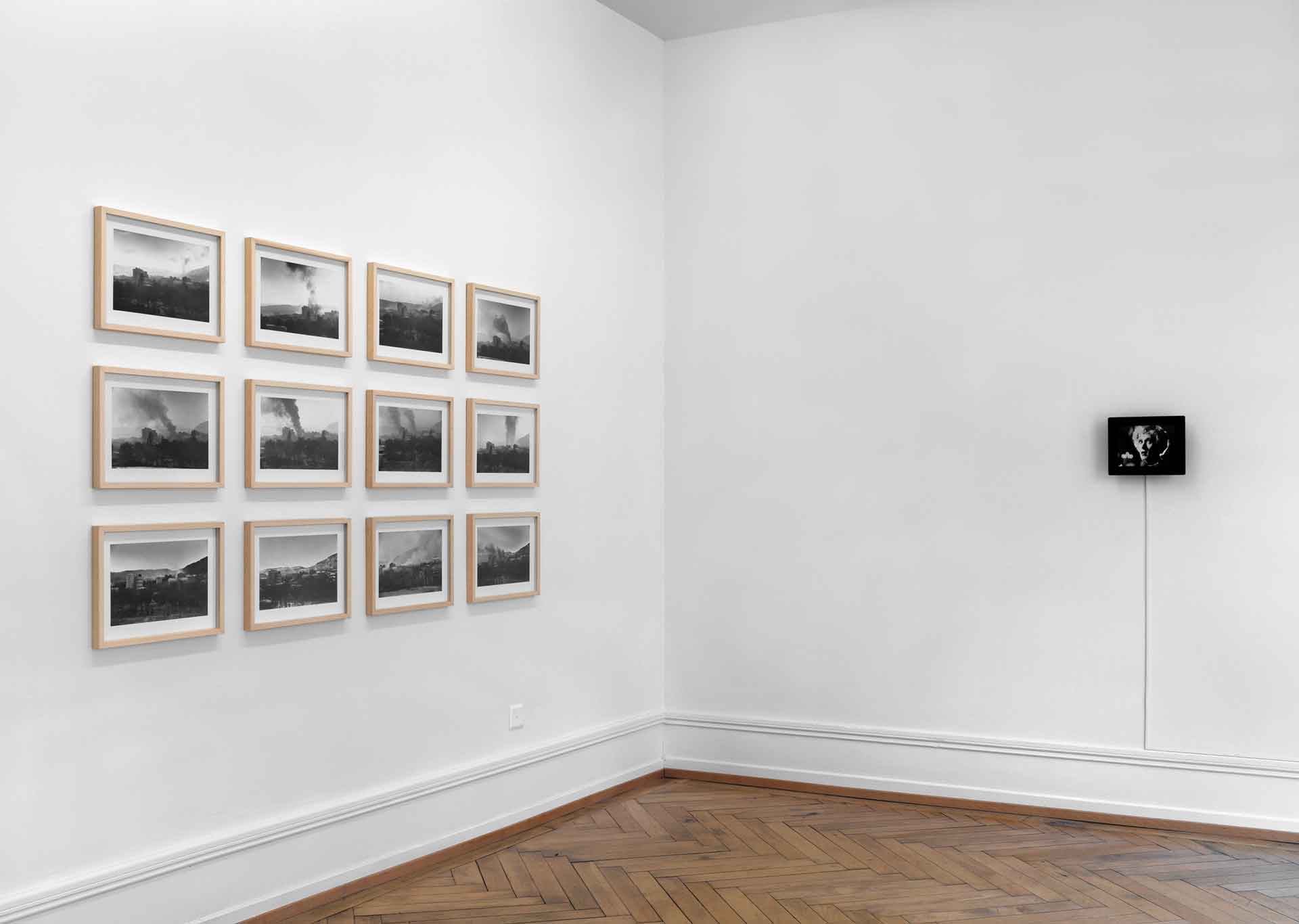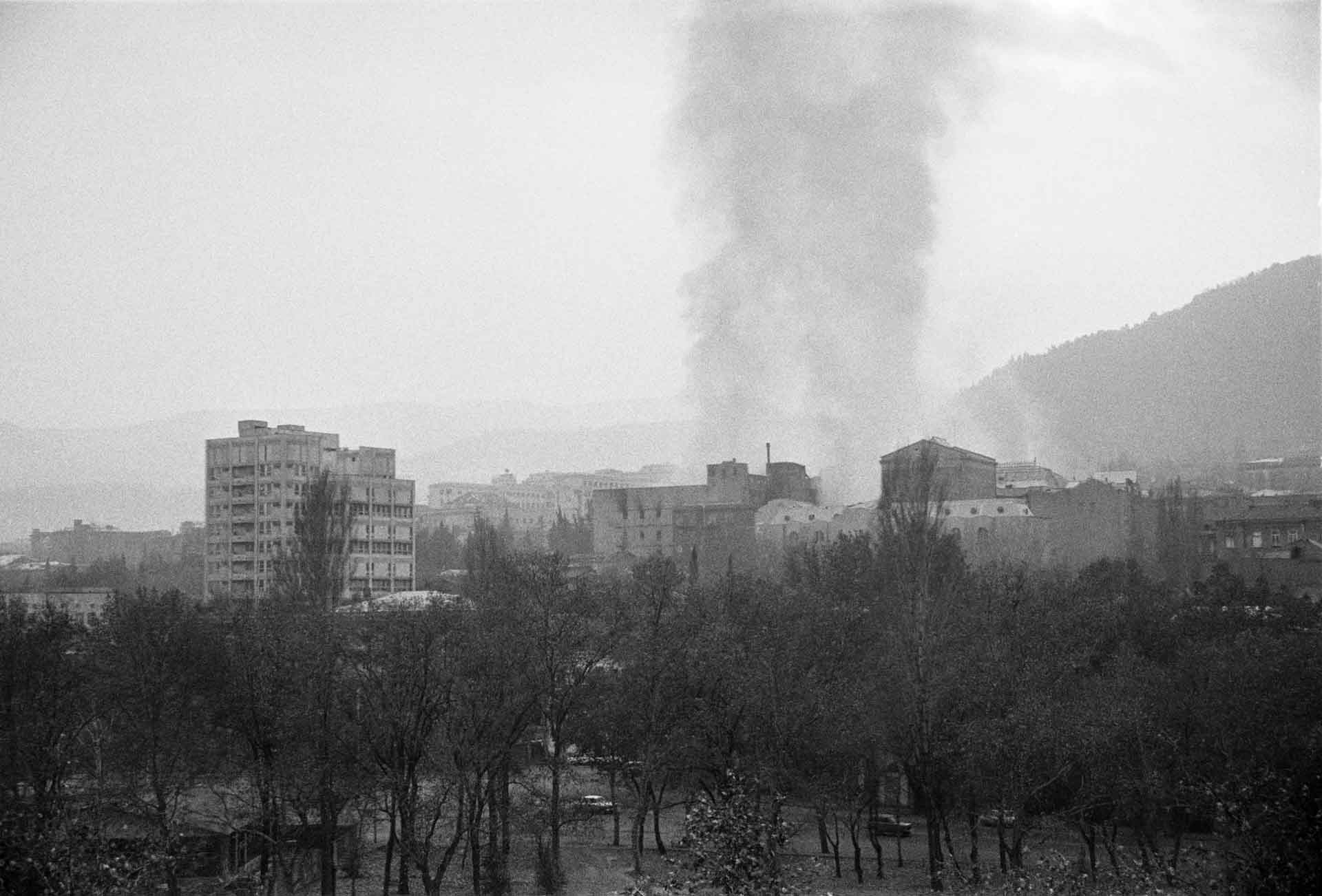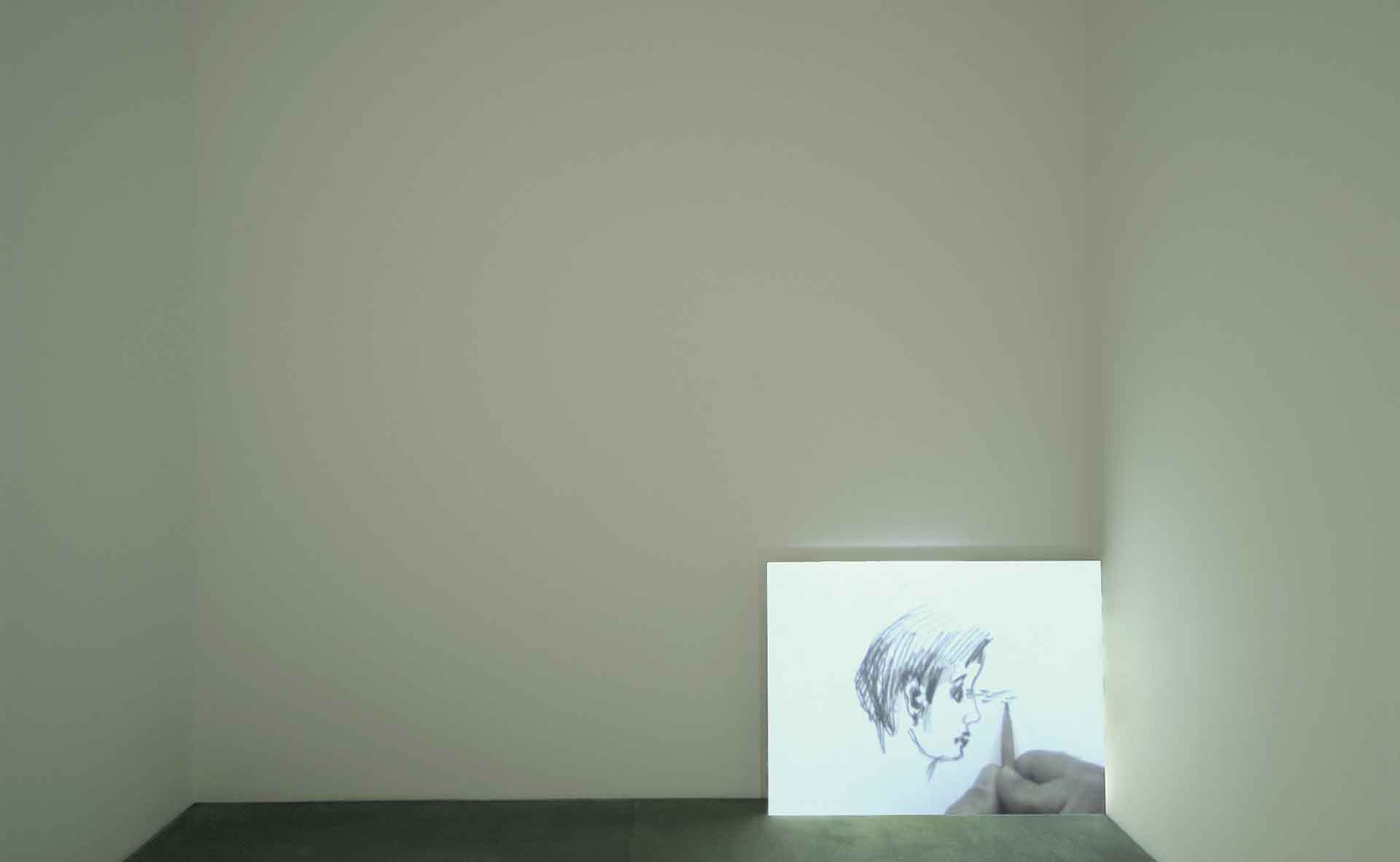
Feel free to add tags, names, dates or anything you are looking for


(From the recent history of Georgian Visual Art)
Koka Ramishvili is a Georgian artist currently residing in Geneva, who works with different media, and any of his projects is distinguished by reflexivity and exquisite quality. His artist biography is very diverse: embracing artistic quests on general issues, as well as personal and intimate spaces. They are consolidated by the artist’s thoughtful position, an attitude towards painting itself, as well as artistic messages and contexts.
Koki Ramishvili is one of the foremost artists in the recent history of Georgian Visual Art, having begun the search for comprehensive artistic approaches to problems brought about by the transitional period of post-Soviet reality. His dramatic series: “War from my window” (1991-1992) is one of the first examples. A chronicle of black-and-white images taken from one visual point in the artist's home during the Tbilisi War; the landscape reveals only views of the city, where neither battle scenes are visible, nor a man’s figure, only the movement of smoke to the sky seems to change unnoticeably. This work was important for the Georgian reality of that period due to two factors: the application of photography in artistic projects was still a novelty, and Koka Ramishvili’s concept – “from documents to the image”- strove for clarification of the relationship between technologies and traditional artistic mediums, and drew a link to current socio-political and cultural processes. It was a characteristic work for the generation of artists who the scholar Alexei Yurchak referred to as “the "last Soviet generation" and who, in Victor Miziano's opinion, were characterized by "an extremely specific historical experience and cultural consciousness.”

Koka Ramishvili. War from my Window in the frame of Perforated Cinema (Solo show). Galerie Mitterrand & Sanz. Zürich. 2009

Koka Ramishvili. War from my Window. 1991-1992

Koka Ramishvili. War from my Window. 1991-1992

Koka Ramishvili. War from my Window. 1991-1992
To describe the chaos and obscurity of the post Civil War period, the artist once more applied a document format with his project Collections of bad and wrong words, implemented in 1993-1994: the words “corruption”, “ego”, and “criminal” were presented as text-concept images in the Arte-Povera tradition and embroidered on pillows in stylized calligraphy. This time, the tradition was conveyed in a decorative form, executed with exquisite embroidery to create a picture of deep contrast with the codes of power manipulation: “The embroidered words produce a sort of hybrid, reflecting a blend of the traditional artistic and cultural codes. The words chosen: “Criminal”, “Morphine”, “Corruption”, “Ego”, “Sex”- are testimony to the current state of our society, haunted by the languages of television and advertising. Their presence on white satin, their being written by means of age-old technique of embroidery acts as a headlong rush through time, a reflection of what Georgian Society is currently going through.“, [1] - wrote Anne Tronch in the exhibition catalogue.

Koka Ramishvili. Collections of bad and wrong words. (Ego). Satin, embroidery. 14.5cmX62cmx6.4cm.1993-1994.
For Koka Ramishvili the documentary image has also not exhausted its topicality, and he returned to the medium for the study of an acutely specific topic: Pronostic EventuelDiplomatic Missions in Georgia (1997-2000).
As the author mentions in the Project concept, inspiration for Pronostic Eventuel was sparked by fundamental changes taking place during the post-war period in Georgia’s capital, embracing political, economic and social arenas. This particular situation was brought about by a contradiction: on the one hand a state plunged into darkness due to an energy crisis was pursuing a completely unsuccessful domestic policy, while on the other hand it was experiencing advances in terms of foreign policy.The country was perceived as interesting on the international stage: "Georgia has become more open to the outside world and the outside world has penetrated into its life”. As a result, many embassies and consulates emerged on the architectural-political landscape, confirming Georgia’s new status. Embassies represented the physical boundaries of Georgia’s relations with the outer world, and became erogenous zones of post-Soviet politics.” [2] The project aimed at creating an architectural-political picture, with its interior and exterior available to members of society, the vast majority of whom still viewed the reality in their own country from an external perspective.
The above-mentioned projects served as the basis for the grand show that was presented at the 53rd Venice Biennale, and which I will review as project curator. While exploring different options, the working group focused on this artist primarily for the reason that he had conceptualized local problems, linked them to the dynamics of general trends, and had also found a suitable artistic form for his work.
We considered it important that Koka Ramishvili’s creative formation had taken place in the late 1990s, and furthermore the artist had not attempted to erase the Soviet past and shift effortlessly to new dimensions by simply operating with new media and repeating the mainstream trends of contemporary art. He introduced himself as an artist who had attended academic painting school in the Soviet era, but was immediately compelled to move to a space where artists were applying rather expensive and sophisticated new technologies. In one of the interviews [3] , Koka Ramishvili talks about two different systems and his work - Drawing lesson, which has been exhibited at various times in many galleries worldwide (MAMCO _Museum of Modern and Contemporary Art. Geneva; MuKHA_Museum van Hedendaagse Kunst Antwerpen, Antwerp, Belgium, etc.)
In this work, the contrasts of the dualistic world have descended to the coexistence of classical drawing and digital technology. This is a short movie, showing the hand-drawing process activated by the sound of a pencil touching paper. The author explains his works as the encounter of these two different realities having determined his life.

Koka Ramishvili. Drawing Lesson. MAMCO, Museum of Modern and Contemporary Art. Geneva.2003
The artist discussed his own work in the above-mentioned interview, and explained that he mastered draughtsmanship while attending classes at Tbilisi State Academy of Arts, after which he lived in Switzerland where contemporary artists would apply new technologies in their work. He combined these two realities in the work and demonstrated the dualistic situation, which is characteristic of post-Soviet conceptual art of his generation. It is also noteworthy, that the work, which is centred on two media, was created with the use of a third medium, i.e. video format.
Koka Ramishvili presented his two-part installation in the Georgian pavilion, where he expanded the topic of Drawing lesson, and exhibited a fragment of creating a painting by projection. The work – Change in painting orchestra - combined two spaces: the installation Change was the first part of the exhibit and was inspired by historical fact – the revolutionary change of government in Georgia. An excerpt from a documentary report on the Rose Revolution (2003) showed a scene of then-incumbent President Mikheil Saakashvili and his supporters storming parliament in protest against the rigged election results. The frequency of the video image was altered and the coverage was relayed with extremely slow-motion image and sound, in imitation of a technical flaw. The Black Sea, the second part of the installation, featured projected fragments from Drawing lesson – the sea, graphically drawn in pencil on four walls, was accompanied with the sounds of pencil writing on paper alike sounds of waves. The context of the second part is expanded to a global context through the specific political event presented in the first hall: The Black Sea is a symbol of Georgia’s geo-political and historic significance, and therefore indicates the context which must be taken into consideration when reading any cultural message from the country. The fact that the topic of the 53rd Biennale was “Making Worlds” is no less important. As its author and chief Biennale curator Daniel Birnbaum pointed out while explaining the concept: “A work of art is more than an object or a consumer item. It embodies a vision of the world, and if we take it seriously, we can see it as a way of creating the world… "In the context of this pathos, Change in painting orchestra shows one model of the meeting of cultures, history and current processes, redefining the functions of art from a post-Soviet country – Georgia.

Koka Ramishvili. Change. Installation. Georgian Pavilion at 53rd Venice Biennale. 2009.

Koka Ramishvili. Black Sea. Installation. Georgian Pavilion at 53rd Venice Biennale. 2009
Koka Ramishvili's "Change in painting orchestra" possesses a structure that the author invariably follows in different works. Emphasis on the space in front of the viewer, which has been transformed by the work, is implied. The viewer is confronted with the fact that this “vacant spot” has become a conditional territory that transforms the meeting of collective memory and individual perspective into iconography.
In one of his recent projects, Koka Ramishvili chose an aerodrome for his subject matter; a so-called anthropological space of transience, where a curtain printed with a photographic landscape accurately restores the limited and ephemeral condition of the aerodrome. According to Koka Ramishvili’s explanation- “an aerodrome as a curtain, as your internal mood…you have to shut the curtain to block out the sun and descend into yourself this way.”

Koka Ramishvili. Aerodrome. From series Stay in Light. Dédicace Gallery. 2020.

Koka Ramishvili. Aerodrome. From series Stay in Light. Dédicace Gallery. 2020.
[1] Anne Tronch. „The other side of the history“. Catalogue. 2000. Paris.
“The embroidered words produce a sort of hybrid, reflecting a blend of the traditional artistic and cultural codes. In fact, the Collection of Bad and Wrong words are immediately framed by two forms of contextualization. The first brings different systems closer together: traditional embroidery and words treated as a plastic material. The words chosen - " Criminal ", " Morphie ", " Corruption ", " Ego ", " Sex ", - are testimony to the current state of our societies, haunted by the languages of television and advertising. Their presence on white satin, their being written by means of age-old technique of embroidery acts as a headlong rush through time, a reflection of what Georgian Society is currently going through”.
[2] Koka Ramishvili. Project: Pronostic eventuel. 1997, Tbilisi, Georgia.
[3] The interview has been recorded in “Map-Media Art-Pherma” by Wato Tsereteli and Daniel Breffin. Contemporary Art Center- Tbilisi’s Archive